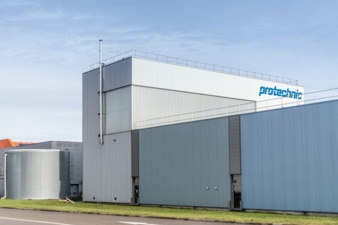08.04.22 – Face masks
PP melt blown nonwoven fabric
Face masks are considered a suitable method to protect people against respiratory viruses. There are different types of them and their efficiency of protection depends on the raw materials.
There are different types of biological agents such as viruses, bacteria, fungi, and other microorganisms which could be able to have a direct effect on human health. Among them, inhalation viruses are more important because of their rapid and sometimes uncontrollable transmission. Some of them, like SARS and MERS, became a threat to human health in recent decades.
Face masks are considered a suitable method to protect people against respiratory viruses. There are different types of them and their efficiency of protection depends on the raw materials which are used for their fabrication such as the textile, polymeric materials, etc. The main function of these masks is often based on adsorption and filtering systems.
Different types of face masks
Basic Cloth Mask, Surgical Mask, N95 (USA) Respirator, Filtering Face piece (FFP1, FFP2, and FFP3) in Europe are some of the masks which are usually used in different cases against respiratory diseases. They have different applications according to their efficiency.
Cloth masks are known usually as general masks but the use of cloth masks during respiratory diseases such as coronavirus pandemic is under debate because of their low efficiency against viruses and nanoparticles. So, it is not advised for the medical workers who have direct contact with the contaminated patients.
Surgical Masks (medical face mask), N95 (USA), and FFP (Europe) Respiratory masks have a high efficiency against the virus, bacteria, and micro/nano particles. These products are suitable for medical workers and industrial dust-proof environments. Also, these are consumed by others because of their high efficiency, low price, and low weight. These properties are due to their raw materials and production processes. Also, the number of layers is different for each of them.
Melt-blown as a high-efficiency filter
Nonwoven fabrics and melt-blown are two principal parts of the masks that have an important effect on their efficiency.
Nonwoven spun-bond fabrics are fibers that are bonded by chemical or physical treatment such as mechanical processing, heating, or using solvents. Polymeric materials such as polypropylene, polyethylene, and polyamides are commonly known as good raw materials for their production.
Nonwoven melt-blown fabrics are porous materials that are produced in a single process of polymer fiber spinning, air quenching/drawing, and web formation. According to this porosity, melt-blown is considered as a high-efficiency filter with various applications such as air and water filtration or fabrication of medical equipment.
Protechnic, a manufacturer in hot melt adhesive bonding, produces polypropylene melt-blown nonwoven via melt blowing process with electret treatment. This process is based on an extrusion system and convergent streams of hot air to convert a polymer to a fine nonwoven fabric. According to some studies, the particle removal efficiency or adsorption effect of nonwoven fabrics could be increased using an electret treatment.
Melt-blown nonwoven produced by Protechnic with thinner fibers with high specific surface area offers a good filtration efficiency and barrier property which are suitable for different applications such as fabrication of the respiratory masks. As a media filter, it has an important role in the removal of different particles, viruses, bacteria, etc.


